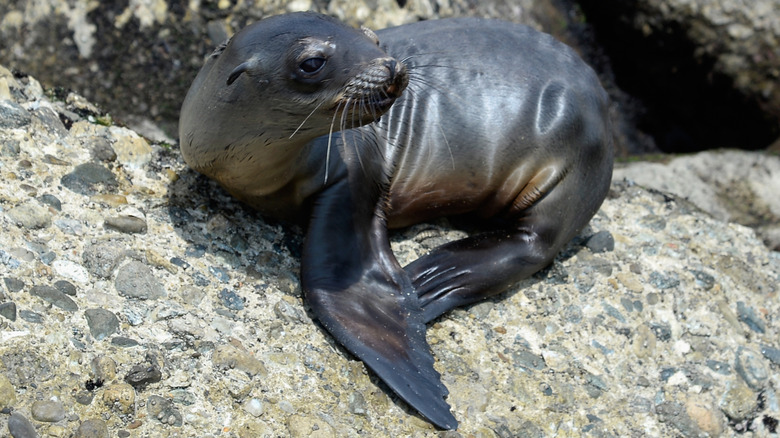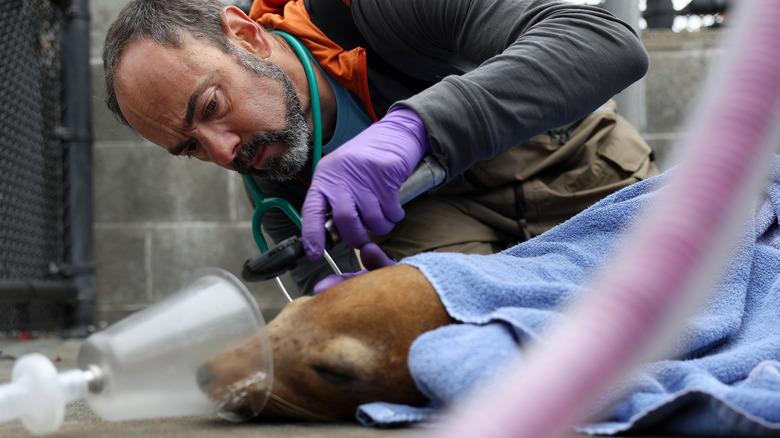Something Strange And Tragic Is Happening With California's Sea Lions
California has seen its share of tragedies over the years, from wildfires and earthquakes to toxic algae blooms that impact coastal ecosystems. The latter made headlines in the late 1990s, when a dangerous bloom killed 400 sea lions and caused brain dysfunction in others. It was the first reported case of the so-called "red tide" affecting sea lions en masse, and now, the same crisis has again sparked concern after confused sea lions were found stranded on Los Angeles beaches in the dozens in early 2025. This neurological reaction stems from a condition called domoic acid toxicosis — poisoning caused from ingesting an algae-produced neurotoxin called domoic acid (also known as amnesic shellfish poison). As we know, sea lions aren't the only animals that can get poisoned in nature; certain stunning flowers can poison cats, and dogs need to be treated for onion poisoning pretty quickly, too.
California's coast features various types of algae, many of which are harmless. However, one particular group of algae — the diatom Pseudo-nitzschia — along the southern coast naturally produces domoic acid and releases it into the environment. If ingested directly in the water or indirectly from eating a contaminated fish, the toxin can result in seizures, lethargy, and death in sea lions, dolphins, and other sea animals. Poisoning can also cause miscarriages in sea lions.
Blooms of this dangerous algae once happened every four to seven years, but warmer water temperatures, climate change, and other weather-related factors have increased the frequency in recent years. In August 2024, NOAA Fisheries reported more than 90 cases of sea lions and dolphins affected by the blooms. The 2025 numbers stand at more than 50 and counting as of March, according to John Warner, CEO of the Marine Mammal Care Center (via NBC 4 Los Angeles). The good news is that beachgoers, rescuers, and others are making efforts every day to help these sea lions, and you can, too.
How to help the sea lions affected by toxic algal blooms
Seeing an animal washed up on a beach will prompt a range of reactions from beachgoers, including a desire to help. Los Angeles' Marine Mammal Care Center (MMC) has provided a list of ways that you can fulfill that desire. If you happen to see a sea lion or other animal behaving strangely ashore, give it space. Don't attempt to physically help or even approach it. Animals experiencing domoic acid toxicosis may behave unpredictably or aggressively. The best way you can help is to call 1-800-39-WHALE as soon as possible, and someone from the center will assist.
Once a rescuer arrives at the beach in response to a report of a beached animal in distress, they will safely collect and transport the animal to the center for treatment. Depending on the symptoms and severity, treatment options for domoic acid toxicosis include flushing the toxin from the body, administering IV fluids, and providing anti-seizure medications. After the animal is treated and recovered, it's released back into the wild.
Even if you don't live anywhere near Los Angeles, you can still help with a financial contribution to MMC. These funds have helped many sea lions receive the proper treatment in a timely manner, giving them a second chance at life.
Now, to brush up on more animal health facts, check out if orchids are poisonous to cats and dogs.

